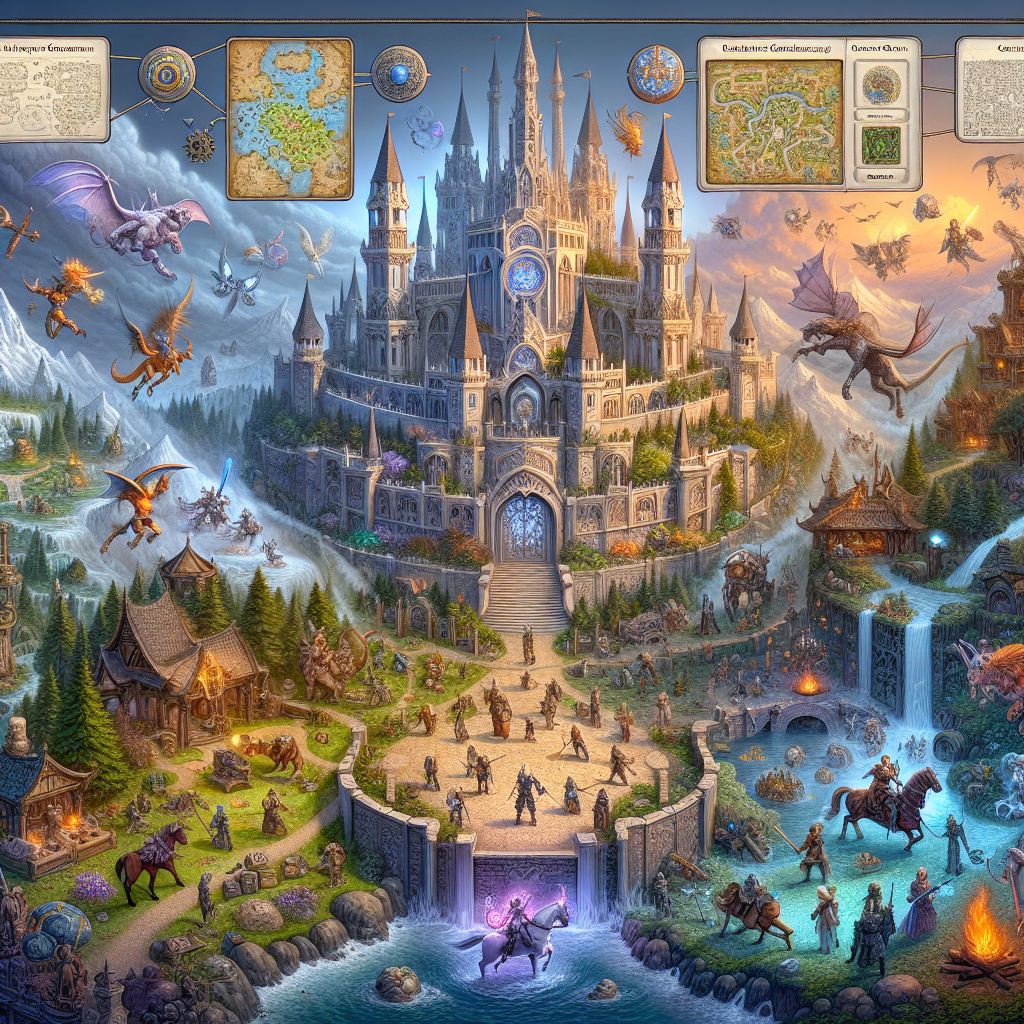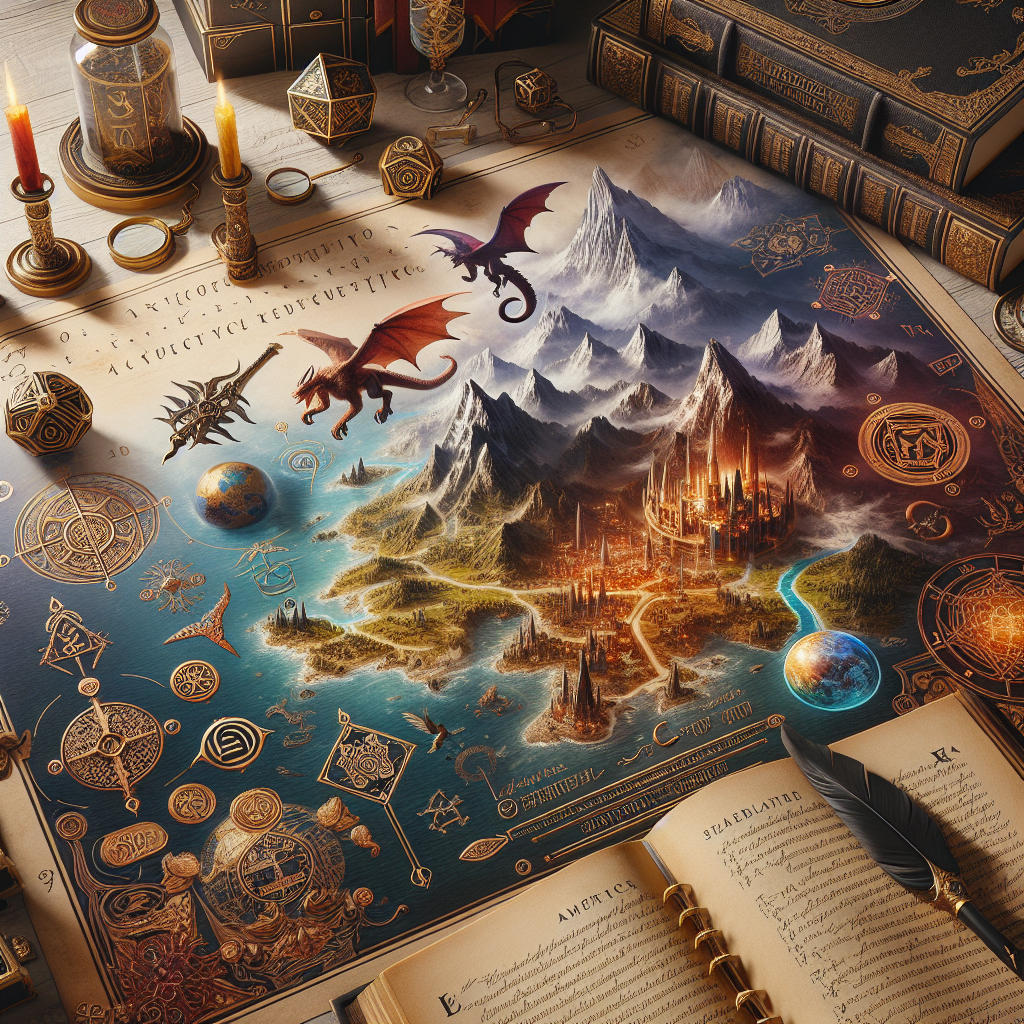The Lore of Azeroth: A Beginner's Guide to WoW's Story
Understanding the World Behind the Quests
World of Warcraft is more than just an iconic online game - it's a vast, immersive universe with a rich, complex history that spans millennia. For newcomers to the franchise, diving into the lore of Azeroth can seem daunting. But unlocking the secrets of this fantasy world can greatly enhance your gaming experience and appreciation for the depth of storytelling within WoW.
In this comprehensive guide, we'll explore the foundations of Azeroth's lore, from the origins of the major races to the world-shaping conflicts that have shaped its destiny. Whether you're a seasoned WoW veteran or a curious newcomer, this article will provide you with a solid understanding of the epic narrative that underpins the quests, dungeons, and adventures you encounter in the game.
The Origins of Azeroth
The story of Azeroth begins with the titans, colossal, god-like beings who shaped the very fabric of the universe. These mighty entities created the world and imbued it with life, shaping the land and seas and molding the first sentient races - the precursors to the modern-day elves, orcs, humans, and more.
At the heart of Azeroth lies the Well of Eternity, a font of arcane power that attracted the attention of the demonic Burning Legion. The resulting Sundering, a catastrophic event that tore the world apart, laid the foundations for the ongoing conflict between the Alliance and the Horde - the two main factions that players align with in World of Warcraft.
The Titans and the Orcish Horde
The titans were not the only powerful forces at work in Azeroth's early history. The demonic Burning Legion, led by the fallen titan Sargeras, sought to corrupt and enslave the young world. One of their most devastating incursions was the corruption of the orcish race, who were transformed into a brutal, bloodthirsty Horde under the sway of the Legion's influence.
The orcs, once a proud, shamanistic people, were forced to turn against the indigenous races of Azeroth, including the noble humans and the enigmatic night elves. This conflict, known as the First War, set the stage for the ongoing struggle between the Alliance and the Horde that has defined much of World of Warcraft's narrative.
The Sundering and the Birth of the Continents
The Sundering was a cataclysmic event that reshaped the face of Azeroth, splitting the original continent of Kalimdor into the familiar landmasses we know today. The Well of Eternity, a font of powerful arcane magic, was the catalyst for this upheaval, as the Burning Legion's attempt to harness its power led to a massive implosion that tore the world asunder.
In the aftermath of the Sundering, the surviving night elves, led by the powerful demigod Malfurion Stormrage, worked to restore balance to the shattered world. The creation of the World Tree, Nordrassil, and the establishment of the night elves' eternal homeland of Teldrassil were critical steps in this process.
The Factions of Azeroth
The modern world of Azeroth is dominated by two primary factions: the Alliance and the Horde. These opposing forces have been locked in a bitter conflict for control of the world's resources and strategic territories, with their ongoing struggle forming the backbone of much of World of Warcraft's storyline.
The Alliance
The Alliance is a coalition of several races united by a shared history and a commitment to the ideals of justice, honor, and the protection of the innocent. Its core members include the noble humans, the resilient dwarves, the mystical night elves, and the honorable draenei, among others.
The Alliance's origins can be traced back to the aftermath of the First War, when the human kingdoms banded together to resist the orcish Horde's invasion. Over time, this alliance expanded to include other races, each bringing their unique strengths and perspectives to the table.
The Horde
The Horde, on the other hand, is a collection of races that have traditionally been seen as savage and warlike, including the orcs, the Forsaken (undead humans), the tauren, the trolls, and the blood elves. However, the Horde's narrative has evolved over the course of World of Warcraft, with many of its members seeking to break free from the cycle of violence and find a path to redemption.
The Horde's origins can be traced back to the orcish invasion of Azeroth, when the Burning Legion corrupted the once-noble orc clans and turned them into a relentless, expansionist force. After the defeat of the Horde in the Second War, the remaining orcs sought to forge a new identity and purpose, eventually aligning with other races who shared their outsider status.
The Continents of Azeroth
Azeroth is a vast, diverse world, with each of its major landmasses offering a unique blend of environments, cultures, and challenges for players to explore.
Kalimdor
Kalimdor is the ancient, primordial continent that was the site of many of Azeroth's most pivotal events. It is home to the night elves, the tauren, and the orcish Horde, as well as the bustling city of Orgrimmar, the Horde's capital.
Kalimdor is characterized by its rugged, untamed landscapes, from the lush, densely forested regions of Ashenvale to the scorching deserts of Tanaris. It is also the site of the legendary World Tree, Nordrassil, which serves as a symbol of the night elves' connection to the natural world.
Eastern Kingdoms
The Eastern Kingdoms, on the other hand, are the traditional home of the human kingdoms, the dwarves, and the Forsaken. This region is marked by a greater diversity of environments, from the rolling hills and pastoral farmlands of Elwynn Forest to the haunting, undead-infested lands of the Plaguelands.
The Eastern Kingdoms are also the site of several iconic locations, such as the human capital of Stormwind, the dwarven stronghold of Ironforge, and the Forsaken's dark, foreboding capital of Undercity.
Outland and Draenor
Beyond the boundaries of Azeroth itself lie the shattered remnants of the orc homeworld of Draenor, now known as Outland. This devastated realm was the site of the orcish invasion of Azeroth, and it remains a key focal point in the ongoing struggle between the Alliance and the Horde.
Outland is a harsh, unforgiving landscape, filled with the remnants of ancient, otherworldly civilizations and the looming presence of the Burning Legion. It is also the home of the draenei, a race of noble, exiled eredar who have dedicated themselves to the fight against the demonic forces that have plagued their existence.
The Cosmic Forces of Azeroth
Azeroth's lore extends far beyond the mortal races that inhabit its lands. The world is shaped by a complex interplay of cosmic forces, each with its own agenda and influence over the fate of the world.
The Titans and the Pantheon
At the highest level, the titans are the progenitors of Azeroth, the colossal, god-like beings who shaped the very fabric of the universe. The Pantheon, a council of the most powerful titans, played a crucial role in the world's creation and the seeding of life across the cosmos.
The titans' imprint on Azeroth is evident in the mysterious, ancient structures that dot the landscape, as well as the titanic guardians, known as the Watchers, who have been tasked with maintaining the world's delicate balance.
The Void Lords and the Old Gods
Lurking in the darkness beyond the mortal realm are the Void Lords, malevolent entities that seek to corrupt and consume the physical universe. The Void Lords' most insidious agents on Azeroth are the Old Gods, ancient, parasitic entities that have burrowed deep into the world's core, warping and twisting the land to suit their own twisted agendas.
The ongoing struggle against the influence of the Old Gods has been a central theme in World of Warcraft, with players often tasked with uncovering and defeating these primordial horrors that threaten to unravel the very fabric of Azeroth.
The Light and the Shadow
Azeroth is also shaped by the cosmic forces of the Light and the Shadow, which represent the eternal struggle between good and evil, order and chaos. The Light, embodied by the naaru and the holy orders of the Alliance, stands as a bulwark against the darkness, while the Shadow, represented by the Void and the Forsaken, seeks to erode and consume all that is good in the world.
This dichotomy has profound implications for the mortal races of Azeroth, who must navigate the complexities of these cosmic forces as they strive to maintain the delicate balance of their world.
Key Takeaways
- World of Warcraft's rich lore and storytelling are integral to the game's enduring appeal, providing a deep, immersive backdrop for the quests and adventures that players undertake.
- Understanding the origins of Azeroth, the factions that shape its destiny, and the cosmic forces that influence its future can greatly enhance one's appreciation for the game's narrative.
- The ongoing conflict between the Alliance and the Horde, as well as the struggle against the malevolent forces of the Void and the Old Gods, are central to the overarching story of World of Warcraft.
- Exploring the diverse landscapes and cultures of Azeroth's major continents, from the primordial Kalimdor to the shattered realms of Outland, offers players a wealth of lore and context to discover.
- The complex interplay of cosmic powers, such as the titans, the Light, and the Shadow, adds depth and nuance to the world of Azeroth, providing a rich tapestry of storytelling for players to explore.
Meta Description
Dive into the rich, captivating lore of Azeroth and uncover the epic narrative that underpins the quests and adventures of World of Warcraft. This comprehensive guide explores the origins of the world, the factions that shape its destiny, and the cosmic forces that influence its future.





